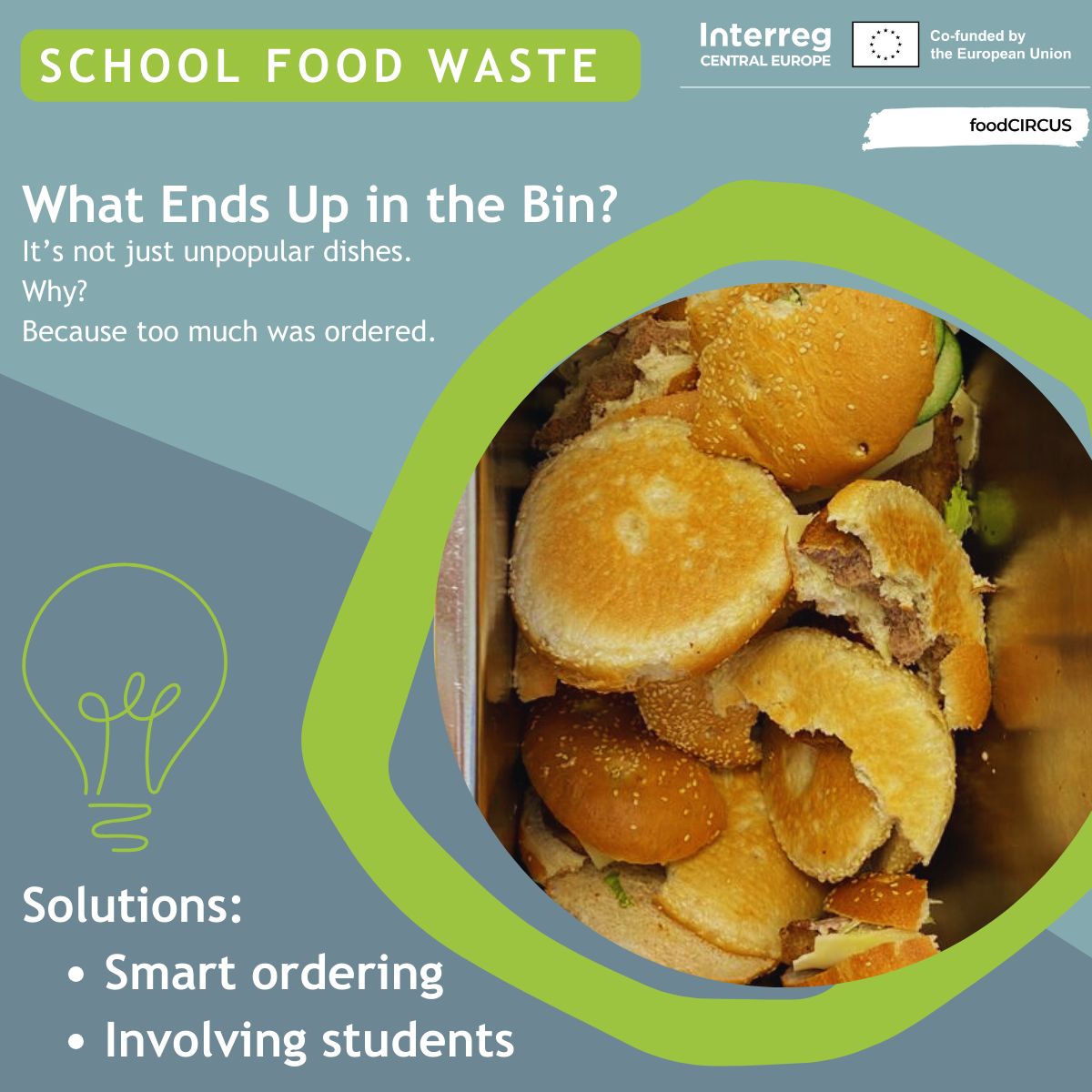What really ends up in the school bin?
A closer look inside Viennese school canteens reveals that a large part of food waste is avoidable and manageable with simple, well coordinated actions.
An in depth analysis from a previous project on food waste in schools showed how waste typically breaks down:
- 27% plate waste – uneaten food left on plates
- 32% serving leftovers – food remaining at the buffet
- 41% untouched food – meals that were never even served
One key reason? Too much food is ordered, often based on outdated routines or incomplete information. For instance, about 11% of pupils are absent without prior notice usually due to illness yet meals still arrive for them.
Practical Solutions for Smarter School Food Systems
Based on this data, the project team proposed several easy to implement improvements that can significantly reduce waste and support better planning:
- Track and adjust orders – Logging uneaten items helps match supply with actual demand
- Include pupils in decision making – Letting them vote on meals increases engagement and reduces leftovers
- Monitor daily attendance – Even basic updates on pupils absences can improve ordering
- Try buffet-style serving – Schools using self-service reported less than half the plate waste (12%) compared to traditional serving (37%)
Shared Benefits for All
Reducing food waste brings benefits across the school environment:
- Pupils become more mindful about food and resources
- Schools reduce kitchen workload and save time
- Budgets can be redirected toward healthier meals and education
- Caterers cut disposal costs and operate more sustainably
These insights from earlier school initiatives highlight how smart, collaborative actions can make school meals more sustainable and help foster a culture of awareness and responsibility among students.
